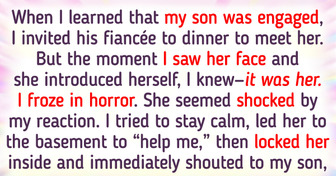18 Extraordinary Parents Who Can Teach Us a Thing or Two

Most of us adore beach resorts and go to one of the large saltwater bodies at least once a year. However, we shouldn’t forget that the sea is as attractive as it is wayward.
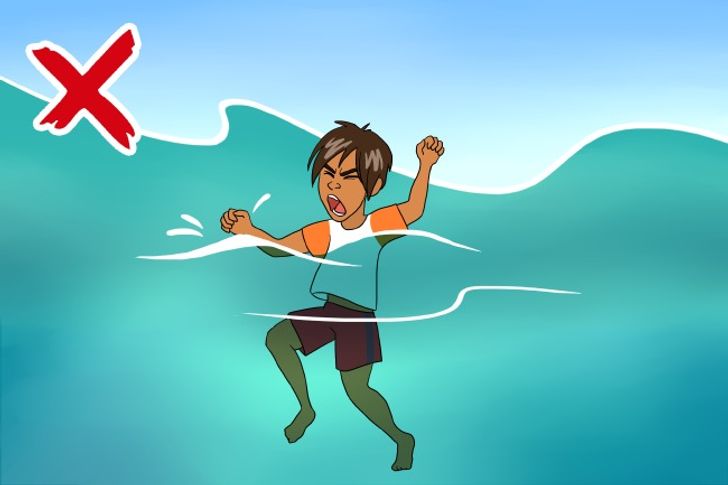
It’s not surprising that people who find themselves in the open water have a wild fear for their life. However, panic definitely won’t help you — it can cloud your judgment and make you lose the necessary rhythm of breathing. Therefore, the first thing you should do is try to calm down.
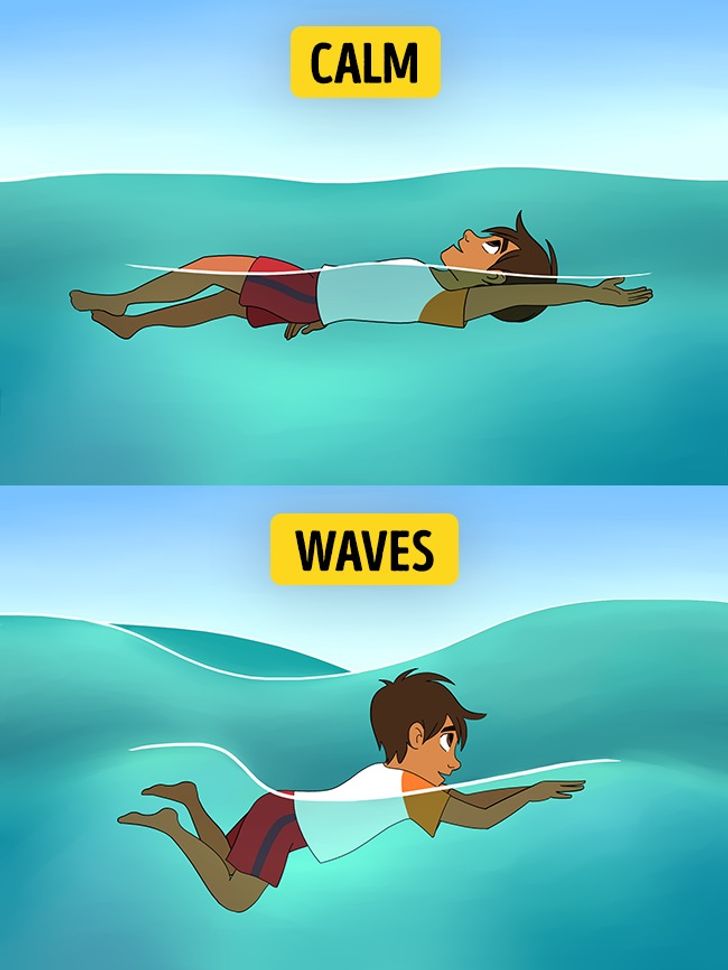
In this situation, sooner or later you’ll have to move in the water. The style of swimming you choose will determine how long your strength will last. Remember this rule:
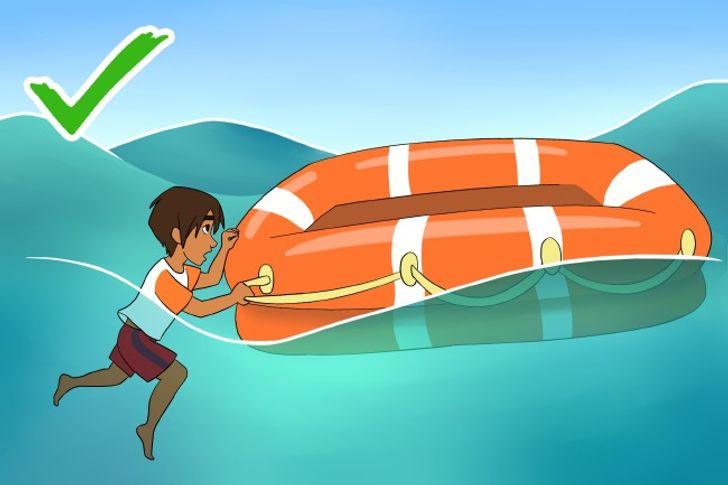
If you’re in the open sea as a result of a shipwreck or an airplane water landing, there must be plenty of things around you that perfectly keep afloat. It will be even better if it’s a boat or a raft with which ships are equipped.
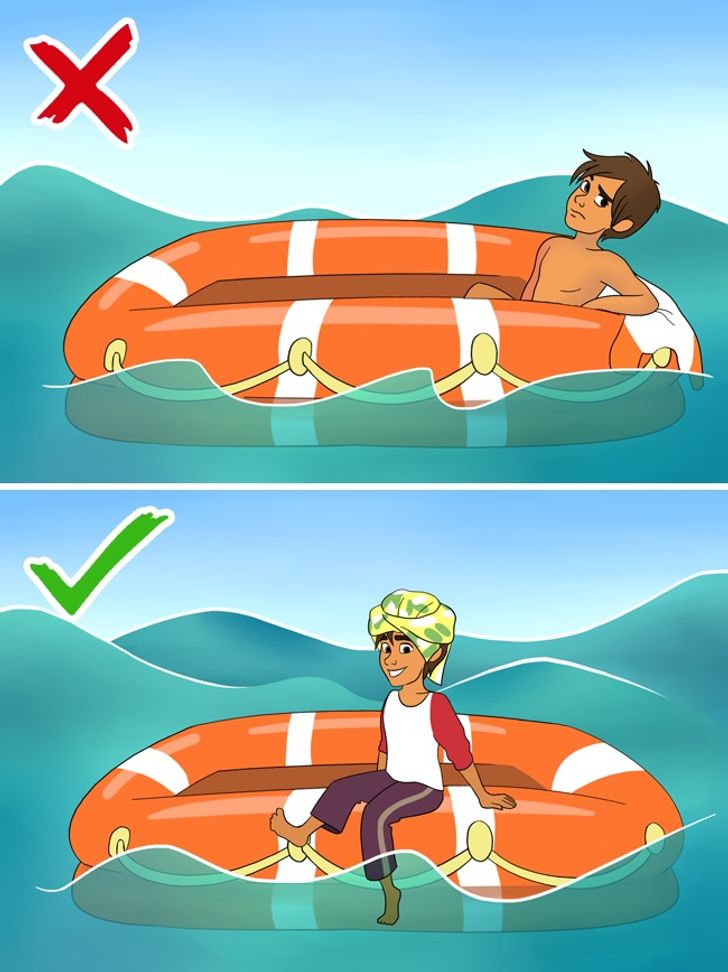
Remember that open sunlight can be extremely dangerous. So don’t take off your clothes — they’ll protect you from the sun.
If you’re half-naked, try to find something that can shelter you from the sun’s rays. Ideally, build a tent that’ll create shade.
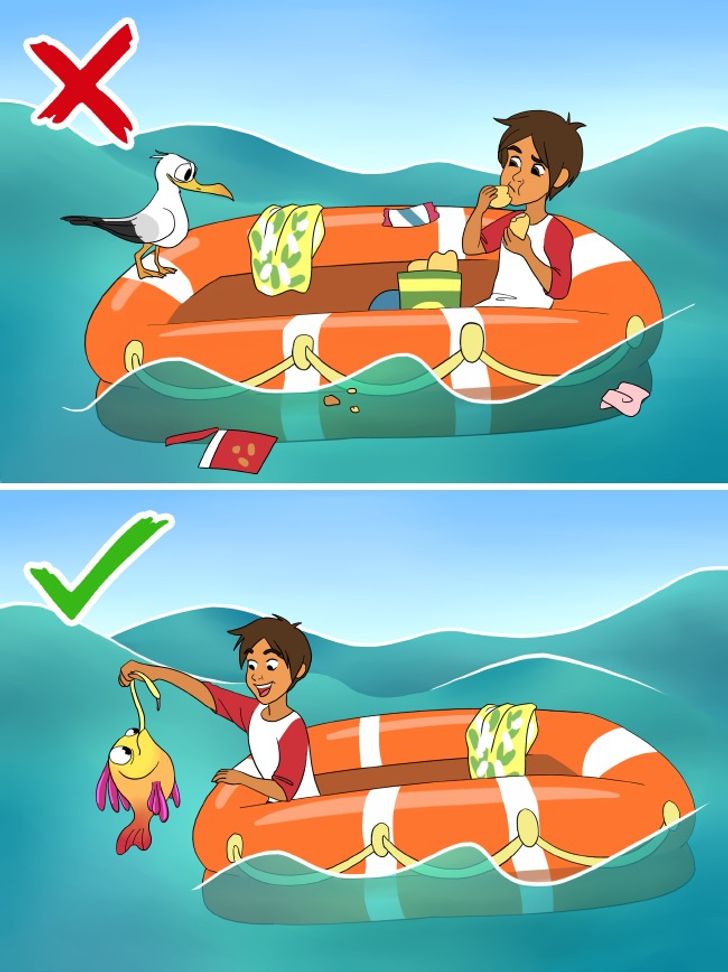
It’s good if you have an emergency food ration on your raft. However, you won’t necessarily starve without one.
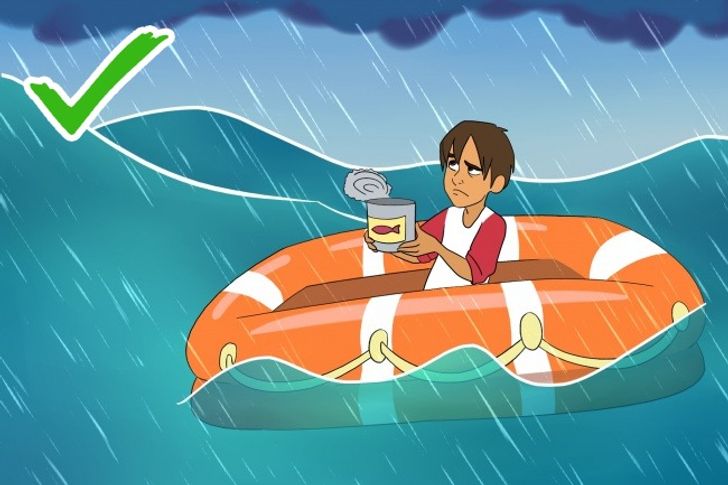
During a forced sailing, water is much more valuable than food. After all, you almost don’t move and you are wasting little energy. Yet liquid is consumed constantly. Remember that you should not drink seawater.
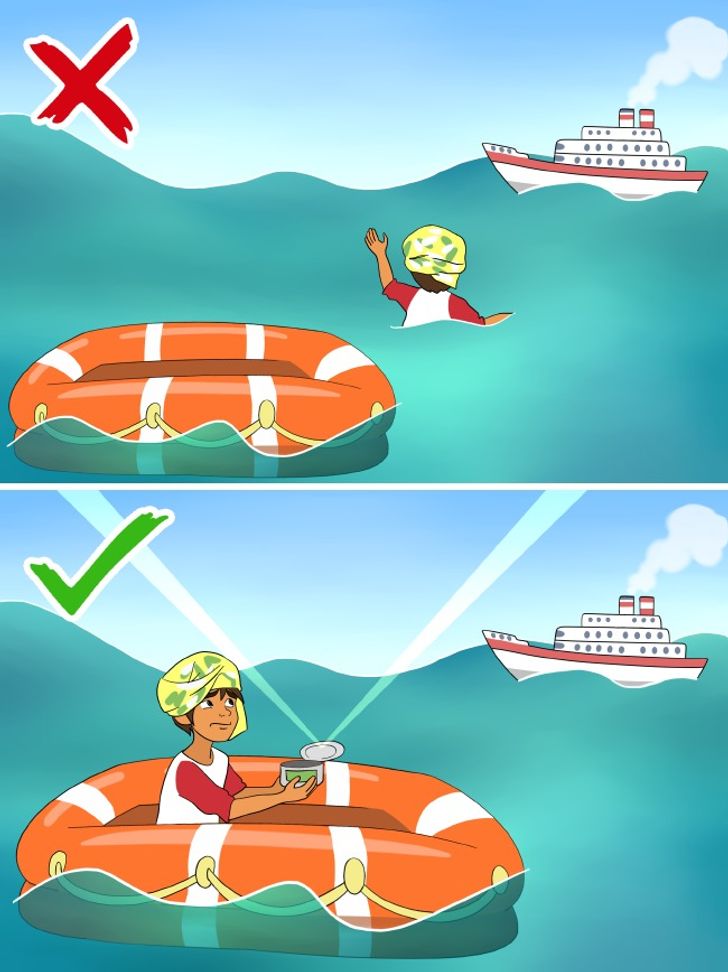
It’s no wonder that in such a situation you’ll want to step on solid ground as soon as possible. However, all your rescue measures should be carefully considered. Remember these rules:
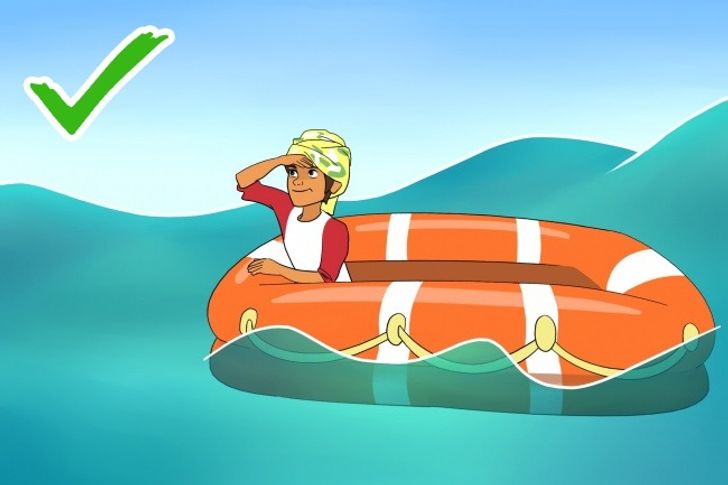
Despair is your most dangerous enemy. Don’t give up hope of being saved. There are many stories of people who were found in the open sea months after their disappearance.





